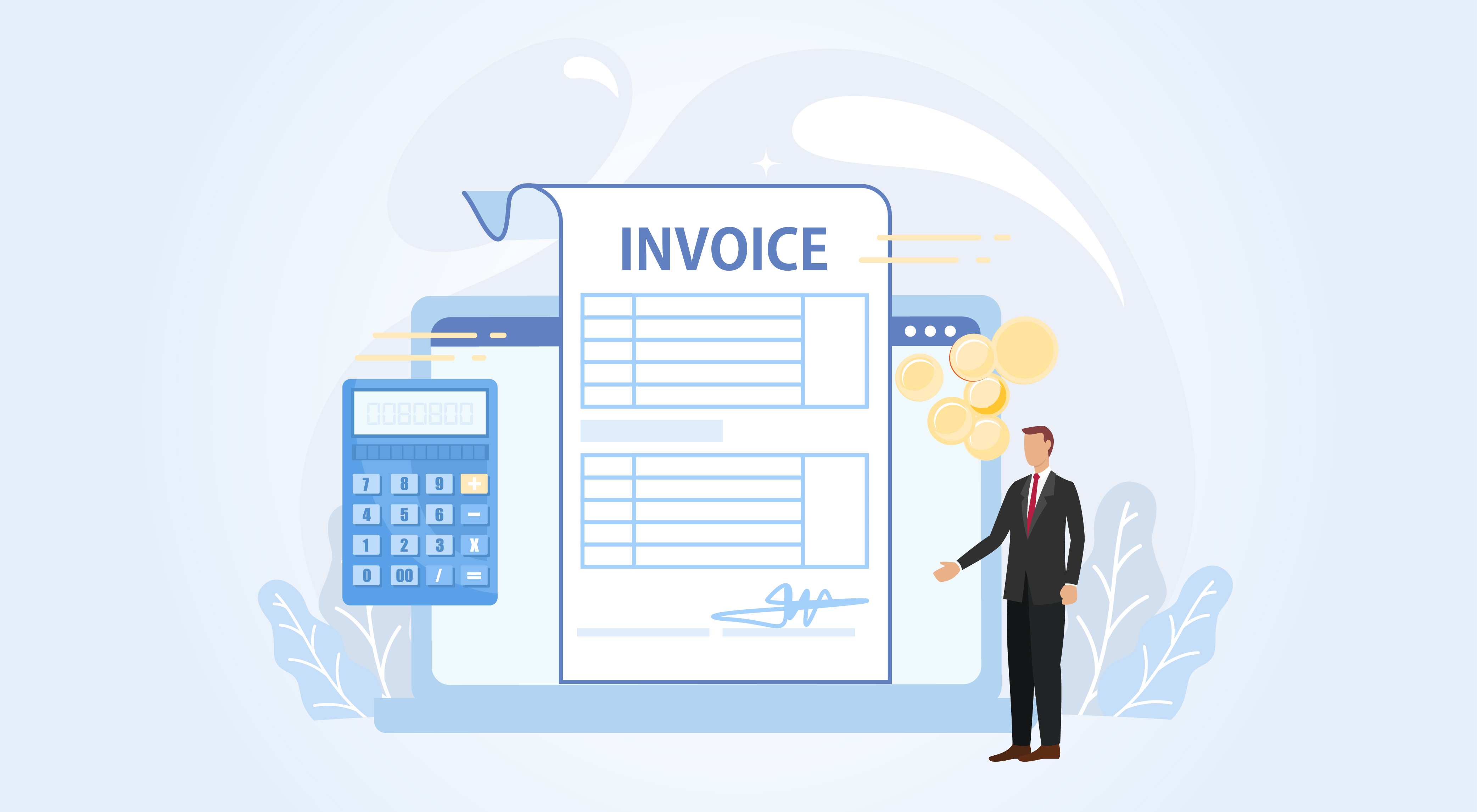Tally Solutions | Updated on: February 6, 2025
e-Invoicing has become mandatory in Saudi Arabia as of December 2021, marking the end of manual paper invoices. It also means no PDF invoices or ones in any other picture format will work.
With e-invoicing still being something new to businesses in Saudi Arabia, many questions are being asked about the possibilities and allowable when it comes to this new digital standard. This blog answers some of the most frequently asked questions on e-invoicing in Saudi Arabia.
FAQs on e-invoicing in Saudi
What is e-Invoicing (Fatoorah) in Saudi Arabia?
E-invoicing in Saudi Arabia, also known as Fatoorah, is a digital invoicing system mandated by the Zakat, Tax and Customs Authority (ZATCA). It requires businesses to generate and store invoices electronically, ensuring compliance with Saudi Arabia’s VAT regulations. E-invoicing replaces traditional paper-based invoices with structured digital formats that can be verified and processed automatically.
Key features of e-invoicing in Saudi Arabia include:
- Two phases: Generation Phase (Phase 1) and Integration Phase (Phase 2).
- Mandatory QR codes on simplified tax invoices for B2C transactions.
- Electronic signatures and cryptographic stamping for enhanced security.
- Integration with ZATCA systems to enable real-time validation and reporting.
TallyPrime provides ZATCA-compliant e-invoicing solutions, helping businesses automate the generation, storage, and submission of Fatoorah-compliant invoices seamlessly.
| Best e-Invoicing (Fatoora) Software in Saudi | How to Generate e-invoices Instantly with TallyPrime in Saudi Arabia |
Why has ZATCA introduced e-Invoicing in Saudi Arabia?
The Zakat, Tax and Customs Authority (ZATCA) has implemented e-invoicing in Saudi Arabia to:
- Enhance tax compliance: Prevent tax evasion by ensuring accurate VAT reporting.
- Standardize invoicing processes: Reduce errors, fraud, and manipulation in invoices.
- Improve business efficiency: Automate invoice generation, verification, and submission.
- Enable real-time reporting: Strengthen transparency by integrating with ZATCA’s centralized system.
- Support Saudi Vision 2030: Align with the Kingdom’s digital transformation initiatives.
By enforcing Fatoorah, ZATCA aims to create a transparent, fraud-proof tax system that benefits both businesses and the Saudi economy. TallyPrime helps businesses comply with these regulations by providing seamless e-invoicing capabilities.
When did the e-Invoicing mandate go into effect?
The implementation of e-invoicing in Saudi Arabia was divided into two key phases:
Phase 1 – Generation Phase (December 4, 2021)
- Businesses were required to generate and store electronic invoices using a structured format (XML or PDF/A-3).
- Manual invoicing was completely phased out.
- QR codes became mandatory for B2C transactions (Simplified Tax Invoices).
Phase 2 – Integration Phase (January 1, 2023, onwards)
- Businesses must integrate their e-invoicing systems with ZATCA’s platform.
- E-invoices require cryptographic stamping and unique identifiers for authenticity.
- Real-time invoice clearance and reporting to ZATCA.
ZATCA is implementing Phase 2 in waves, based on business turnover. If you are a business operating in Saudi Arabia, TallyPrime ensures compliance by offering automated e-invoicing solutions, allowing seamless integration with ZATCA’s platform.
FAQs on e-Invoicing Scope and Applicability
Who is Required to Issue E-Invoices in Saudi Arabia?
E-invoicing in Saudi Arabia is mandatory for all VAT-registered businesses operating in the Kingdom. According to the Zakat, Tax and Customs Authority (ZATCA), the following entities must comply with the Fatoorah e-invoicing system:
- All businesses registered for VAT in Saudi Arabia.
- Third parties issuing tax invoices on behalf of VAT-registered businesses.
- Any individual or entity conducting commercial activities and required to issue VAT invoices.
This requirement applies to both B2B and B2C transactions, covering Standard Tax Invoices (for businesses) and Simplified Tax Invoices (for consumers). Additionally, export invoices, credit notes, and debit notes must be electronically generated and stored as per ZATCA’s e-invoicing guidelines.
TallyPrime ensures seamless compliance by automating Fatoorah-compliant invoice generation, helping businesses stay aligned with ZATCA regulations.
Are There Any Exemptions from the E-Invoicing Requirement?
Yes, while e-invoicing in Saudi Arabia applies to most VAT-registered businesses, certain entities are exempt from the requirement:
- Non-VAT-registered businesses: Businesses that are not registered under Saudi VAT regulations do not need to issue e-invoices.
- Non-resident businesses: Foreign businesses with no physical presence in Saudi Arabia and only providing taxable supplies do not need to comply with e-invoicing.
- Exempt VAT supplies: Businesses that deal exclusively in VAT-exempt goods and services are not required to issue e-invoices.
However, if a business voluntarily registers for VAT or deals with both taxable and exempt supplies, e-invoicing may still be applicable.
For businesses required to comply, TallyPrime offers a ZATCA-approved e-invoicing solution, ensuring a smooth transition to Fatoorah-compliant invoicing.
What is the Difference Between Standard and Simplified E-Invoices?
E-invoicing in Saudi Arabia, mandated by ZATCA (Zakat, Tax and Customs Authority), requires businesses to issue either Standard Tax Invoices or Simplified Tax Invoices, depending on the type of transaction.
|
Feature |
Standard E-Invoice |
Simplified E-Invoice |
|
Purpose |
Used for B2B (Business-to-Business) and B2G (Business-to-Government) transactions |
Used for B2C (Business-to-Consumer) transactions |
|
Details Included |
Buyer & seller VAT numbers, itemized details, tax amount, total amount, and mandatory e-signature & cryptographic stamp (in Phase 2) |
Buyer details not mandatory, includes QR code, total amount, VAT, and itemized details |
|
Format |
XML or PDF/A-3 format with embedded XML |
PDF with embedded XML or structured electronic format |
|
ZATCA Submission Requirement |
Must be reported to ZATCA in real time before sharing with the buyer (Phase 2) |
Must be stored electronically and made available to ZATCA upon request |
|
QR Code |
Optional but recommended |
Mandatory for consumer invoices |
How TallyPrime can help you in e-invoicing?
TallyPrime, a complete business management software is enhanced with an e-invoicing solution that helps you generate and manage e-invoicing with ease. From generating e-invoices instantly to storing and keeping track of them through the e-invoicing report. Below are some of the key e-invoicing features of TallyPrime.
- Generate e-invoices in a single click
- Print QR code on invoices effortlessly
- Generate e-invoices for tax invoices and simplified invoices
- Exclusive e-invoice report will give you a single view of all e-invoicing tasks
- Intuitive prevention, detection, and correction mechanisms will help you deal with exceptions with ease
- Supports e-invoice for debit note, credit note POS invoice, and receipts
- Export e-invoice in an XML file as per ZATCA (GAZT) requirement
- Security control and User login management
- User session log register to view all the log details indicating the entire history of the masters & transactions
FAQs on Phases of e-Invoicing Implementation
What Are the Key Phases of E-Invoicing in Saudi Arabia?
The e-invoicing (Fatoorah) system in Saudi Arabia, mandated by ZATCA (Zakat, Tax and Customs Authority), is being implemented in two key phases:
Phase 1 – Generation Phase (Effective December 4, 2021)
Businesses must generate, store, and issue e-invoices in a structured electronic format (XML or PDF/A-3 with embedded XML).
Manual or handwritten invoices are no longer allowed.
QR codes are mandatory for B2C (Simplified) invoices.
Businesses must ensure that their invoicing systems are e-invoicing compliant, but no direct integration with ZATCA is required in this phase.
Phase 2 – Integration Phase (Started January 1, 2023 and ongoing in waves)
Businesses must integrate their e-invoicing systems with ZATCA’s central platform.
Standard e-invoices (B2B, B2G) must be cleared in real-time by ZATCA before being shared with buyers.
Simplified e-invoices (B2C) must be reported to ZATCA within a defined period.
E-invoices must include cryptographic stamps, UUID (Unique Invoice Identifier), and electronic signatures.
What Is the Timeline for the Two Phases of E-Invoicing Implementation?
Phase 1 – Generation Phase
Implemented on December 4, 2021
Required for all VAT-registered businesses in Saudi Arabia.
Phase 2 – Integration Phase (Ongoing in waves based on revenue)
Started on January 1, 2023 and being rolled out in multiple waves:
Wave 1 (January 1, 2023) → Businesses with annual revenue ≥ SAR 3 billion (2021).
Wave 2 (July 1, 2023) → Businesses with revenue ≥ SAR 500 million (2021).
Wave 3 (October 1, 2023) → Businesses with revenue ≥ SAR 250 million (2021).
Wave 4 (February 1, 2024) → Businesses with revenue ≥ SAR 150 million (2021).
Wave 5 (June 1, 2024) → Businesses with revenue ≥ SAR 100 million (2021).
More waves will follow for smaller businesses, as per ZATCA's timeline.
TallyPrime provides a ZATCA-compliant e-invoicing solution, ensuring businesses stay fully prepared for both phases with automated invoice generation, integration, and reporting.
FAQs on Technical and Compliance Requirements
What is an Electronic Signature, and How is it Used in E-Invoices?
An electronic signature (e-signature) is a digital form of a signature that validates the authenticity and integrity of an electronic document, including e-invoices in Saudi Arabia. In e-invoicing, e-signatures ensure that the invoice is legally binding, secure, and tamper-proof. According to ZATCA (Zakat, Tax, and Customs Authority), e-signatures are mandatory for invoices in the e-invoice format to maintain transparency and secure electronic transactions.
How is an e-signature used in e-invoices?
It authenticates the identity of the issuer.
Ensures that the invoice data remains unaltered during electronic transmission.
Provides legal credibility to digital transactions.
What is a QR Code, and What Information Does it Contain?
A QR code (Quick Response code) is a two-dimensional barcode used to store and share information quickly. In the context of e-invoices in Saudi Arabia, the QR code is a mandatory component of the simplified tax invoices.The QR code in an e-invoice contains essential information, including:
- Seller’s name and VAT registration number.
- Invoice date and time.
- Total invoice amount including VAT.
- VAT amount separately.
- Cryptographic stamp for data integrity.
This QR code enables ZATCA and businesses to verify the authenticity and compliance of e-invoices easily.
Can I Use My Existing Invoicing Software for E-Invoicing?
Yes, you can use your existing invoicing software, but it must meet ZATCA’s e-invoicing requirements. The software should:
- Generate invoices in the compliant e-invoice format (XML or PDF/A-3).
- Include mandatory elements such as e-signatures and QR codes.
- Ensure data integrity and comply with security protocols mandated by ZATCA.
- E-invoicing in Tally Prime, for instance, already supports seamless generation of compliant e-invoices with built-in features for QR codes, electronic signatures, and integration with ZATCA’s systems.
How Do I Ensure that My E-Invoices Are Compliant with ZATCA’s Regulations?
To ensure compliance with ZATCA’s regulations:
- Use Compliant Software: Opt for trusted e-invoicing software like Tally Prime that supports QR code generation, e-signatures, and secure data formats.
- Include All Mandatory Fields: Ensure your e-invoices contain all the required elements, such as seller details, invoice date, total amount, and VAT information.
- Maintain Data Integrity: Use systems that prevent unauthorized data changes.
- Stay Updated: Regularly update your software to align with the evolving ZATCA requirements.
- Test and Validate: Use ZATCA’s testing environment to validate your e-invoices before full implementation.
By leveraging tools like Tally Prime for e-invoice generation, businesses in Saudi Arabia can maintain compliance and streamline their invoicing processes efficiently.
FAQs on e-Invoicing Process
How Do I Generate an E-Invoice?
To generate an e-invoice in Saudi Arabia, follow these steps:
- Use Compliant Software: Choose software like Tally Prime, which supports e-invoice formats compliant with ZATCA regulations.
- Enter Invoice Details: Input customer details, product or service descriptions, tax information, and total amounts, including VAT.
- Generate the E-Invoice: Ensure the invoice includes mandatory elements, such as the seller's VAT registration number and invoice date.
- Attach a QR code and apply an electronic signature if required for simplified or tax invoices.
- Save in a Compliant Format: Export the invoice in XML or PDF/A-3 format as per ZATCA requirements.
- Submit for Integration: Connect with ZATCA’s systems if you're in Phase 2 for real-time validation and reporting.
Can I Amend or Cancel an E-Invoice Once It Has Been Issued?
Yes, amendments or cancellations are possible under certain conditions:
- Amending an E-Invoice: Create a debit or credit note referencing the original e-invoice.
Ensure the note includes details such as the reason for amendment and updated amounts. - Cancelling an E-Invoice: You cannot directly delete an e-invoice. Instead, issue a credit note to cancel the transaction.
The credit note must follow ZATCA’s compliance rules and maintain an audit trail.
How Should I Store and Archive E-Invoices for Future Reference?
Proper storage of e-invoices is essential for regulatory compliance:
- Secure Digital Storage: Store e-invoices electronically on a secure server or cloud-based solution.
Use encryption to protect sensitive data. - Data Retention Period: Maintain e-invoices for at least six years as required by ZATCA regulations.
- Organized Filing System: Ensure invoices are easily searchable by date, customer, or invoice number.
- Backup Regularly: Create redundant backups to safeguard against data loss.
Software like Tally Prime provides built-in features for organized e-invoice storage and retrieval.
How Do I Register My Business for E-Invoicing with ZATCA?
To register your business for e-invoicing with ZATCA
- Create an Account on ZATCA Portal: Visit the ZATCA official website and register your business.
- Provide Business Details: Enter your commercial registration number, VAT details, and contact information.
- Activate E-Invoicing: Complete the onboarding process by following ZATCA’s instructions for integrating your invoicing system.
- Integrate with ZATCA: For Phase 2, ensure your software complies with API integration and real-time invoice reporting.
Explore More Products
Latest Blogs

Simplify Payments with Precision: Integrated Payments & Accounting in TallyPrime 6.0

Introducing TallyPrime Cloud Access Starting from AED 63/Month

Maximising Tax Benefits for Free Zone Entities under UAE Corporate Tax Law

Key Dates for Phases and Waves of e-Invoicing Compliance in KSA

Simplifying VAT Compliance for Financial Institutions Using SWIFT Messages in UAE


